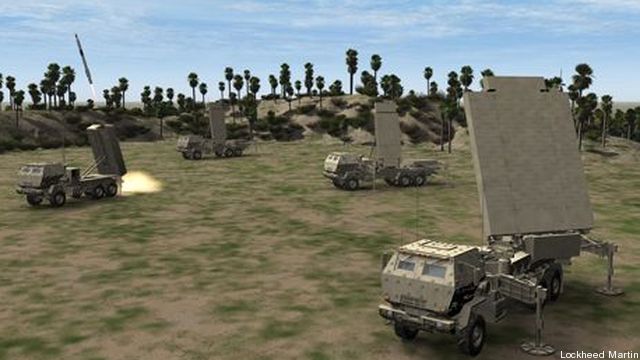Should U.S. Keep Spending $12.5B Each Year On Patriot Anti-Missile System?
Posted on

If you want to know how important conferences such as AUSA, AFA, Navy League, AUVSI or GEOINT are, just consider the fact that Lockheed Martin chose to write this MEADS op-ed and submit it so it would appear just as AUSA opened. Let the show begin! — The editor.
Last month, a congressionally-mandated, Missile Defense Agency-funded National Research Council report stunned lawmakers by revealing the extraordinary cost to keep the Patriot missile system repaired and operating. It quoted Army sources saying that each Patriot battalion costs between $735 million and $809 million annually. So every year, the Army’s 15 Patriot battalions cost taxpayers over $12 billion dollars to operate and maintain.
With requested Patriot upgrades averaging another $500 million per year, the U.S. might spend over $125 billion just to keep Patriot operating for another 10 years. It’s clear evidence why Cold War legacy systems must be retired.
The solution is the next-generation Medium Extended Air Defense System (MEADS). Because lower operating costs and reduced manpower are primary requirements for MEADS, retiring Patriot would pay for MEADS in only a few years and save billions in every year after that. Even harvesting MEADS core components such as the 360-degree radar, launcher and battle manager would pay huge affordability and performance dividends.
MEADS also saves through greater capability. Each MEADS battalion defends eight times the area of a Patriot battalion. Even with half the equipment, a MEADS-equipped Army would still have four times the capability it has in place today, at much less cost.
In recent trade shows in Huntsville and Berlin, MEADS system elements demonstrated how soon revolutionary capabilities can be put to work to protect soldiers, landing sites and cities.
Most recently, the rotating Surveillance Radar demonstrated that it is a significant departure from the massive trailer-mounted fixed radars in Patriot. MEADS radars are truck-mounted for mobility and provide 360-degree full-perimeter coverage against tactical ballistic missiles and air-breathing threats. Like all MEADS hardware, the radars can be added or subtracted from the active network as task assignments change.
These radars are the result of user experience and Patriot’s severe limitations during combat in Iraq. A decade ago, Army users set requirements for a next-generation air and missile defense system that would be quickly and easily transportable. They needed full, 360-degree coverage with increased lethality and range to defeat emerging threats. But in addition to improved protection for soldiers, they also required a more affordable and capable system – software that is easy to maintain, highly reliable electronics and smaller crews to lower operating costs. This is the capability that MEADS is demonstrating in successful tests.
Last year, at White Sands Missile Range, MEADS system elements demonstrated an unprecedented over-the-shoulder launch of a PAC-3 MSE Missile against a simulated target attacking from behind. This fall, including the demonstrated missile and launcher, a MEADS unit will acquire and intercept an air-breathing threat.
No set of modifications and no amount of tax dollars spent on engineering services can make Patriot as agile, as flexible or as easy to operate and maintain as MEADS.
So it doesn’t make sense to continue spending billions of dollars on a 40-year-old Patriot system. Not when you can see the future of air and missile defense on test ranges today.
Dave Berganini is president of MEADS International, a Lockheed Martin subsidiary.
Subscribe to our newsletter
Promotions, new products and sales. Directly to your inbox.
